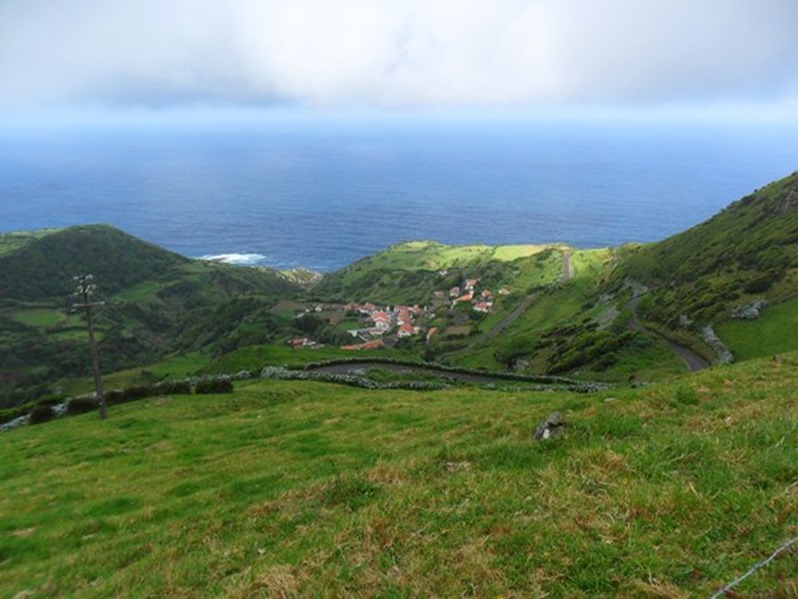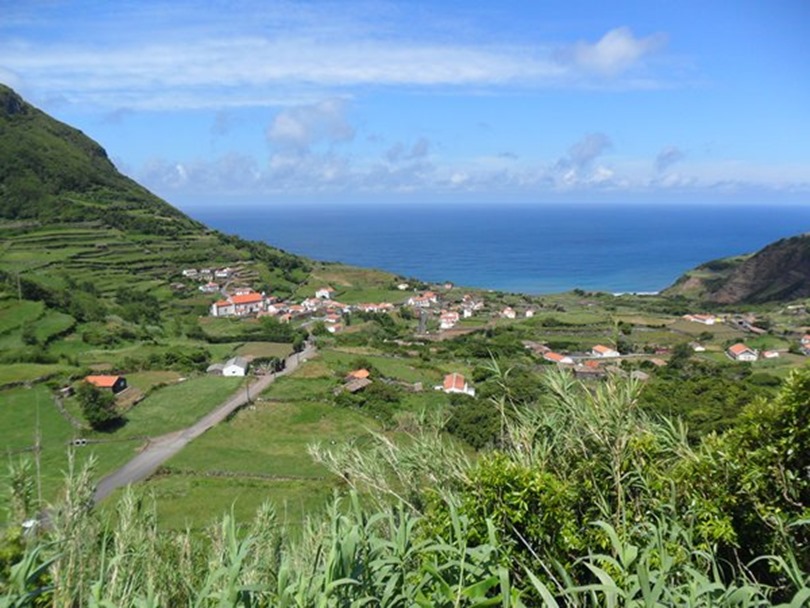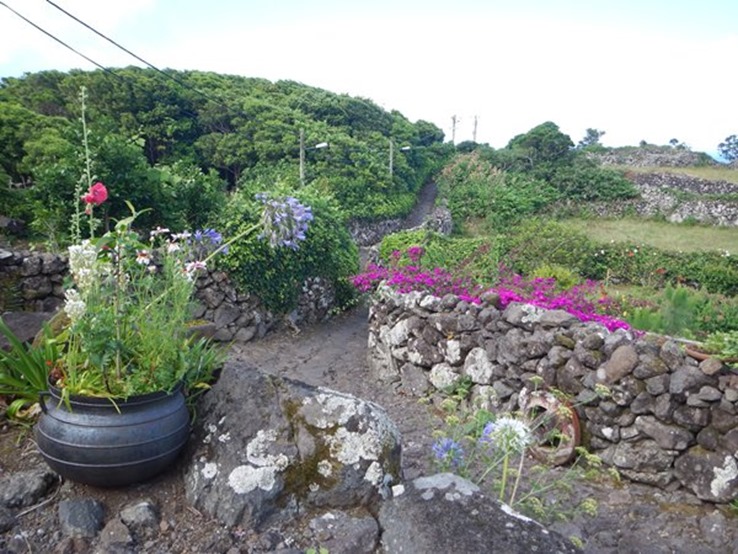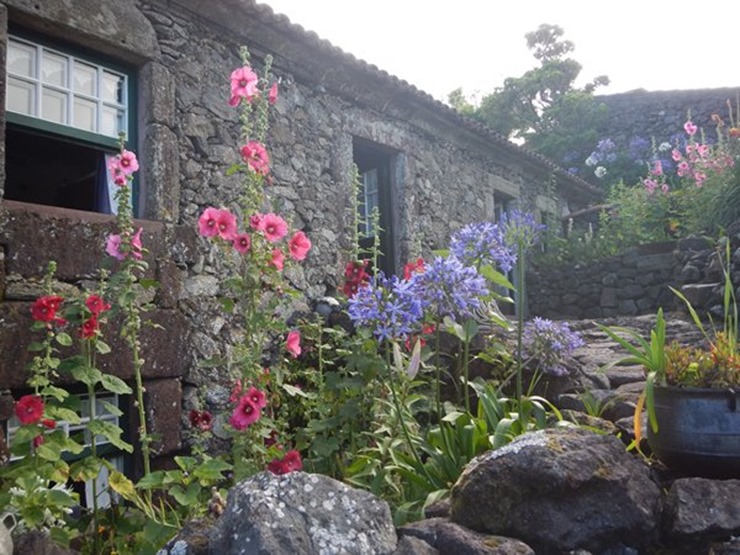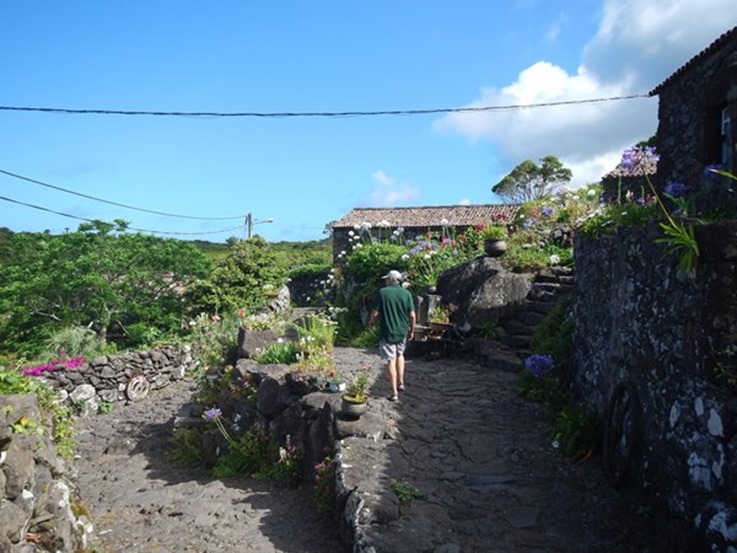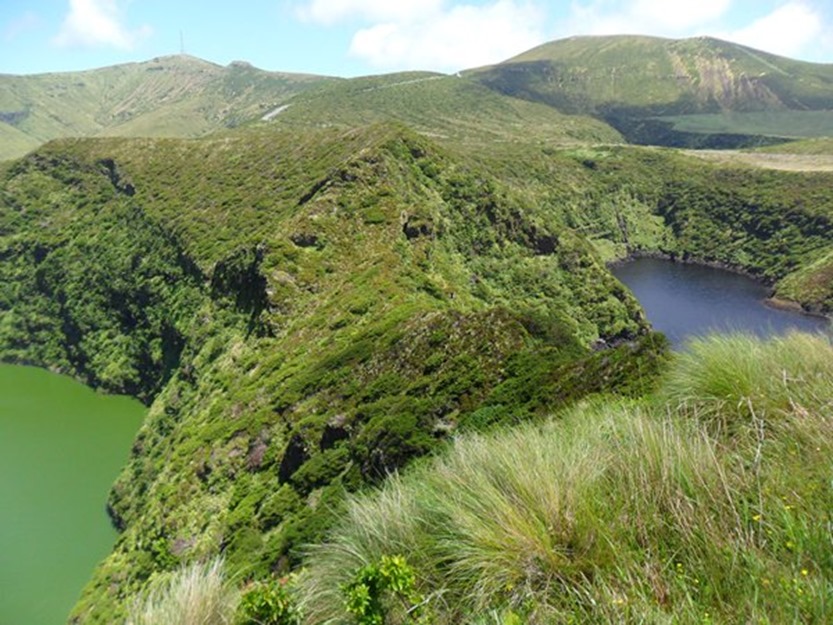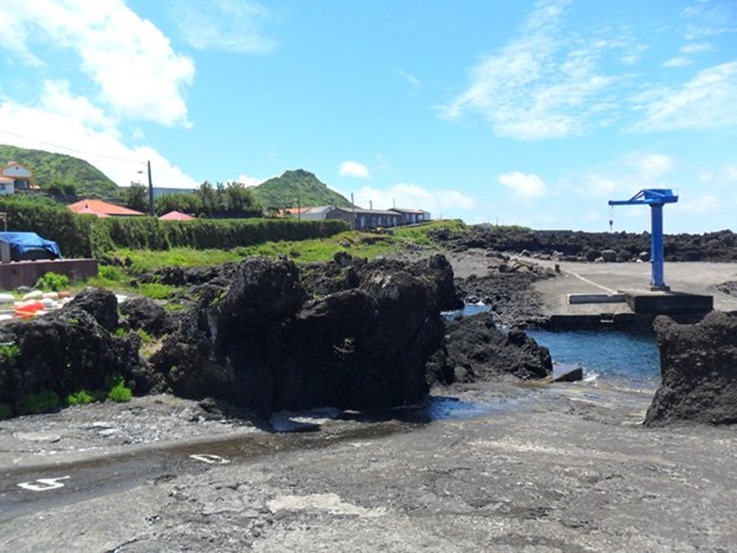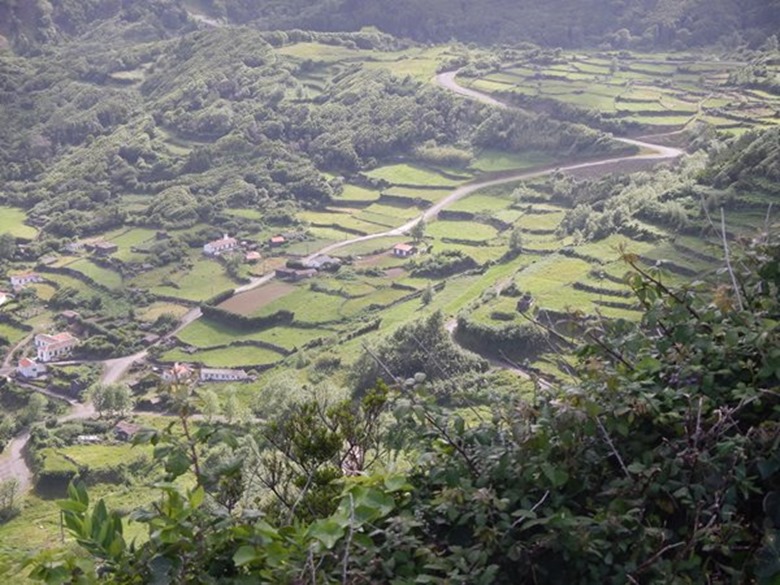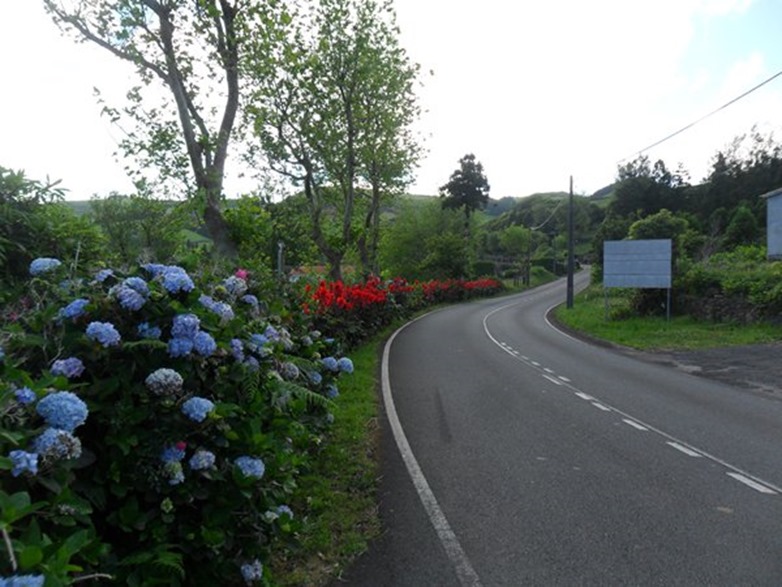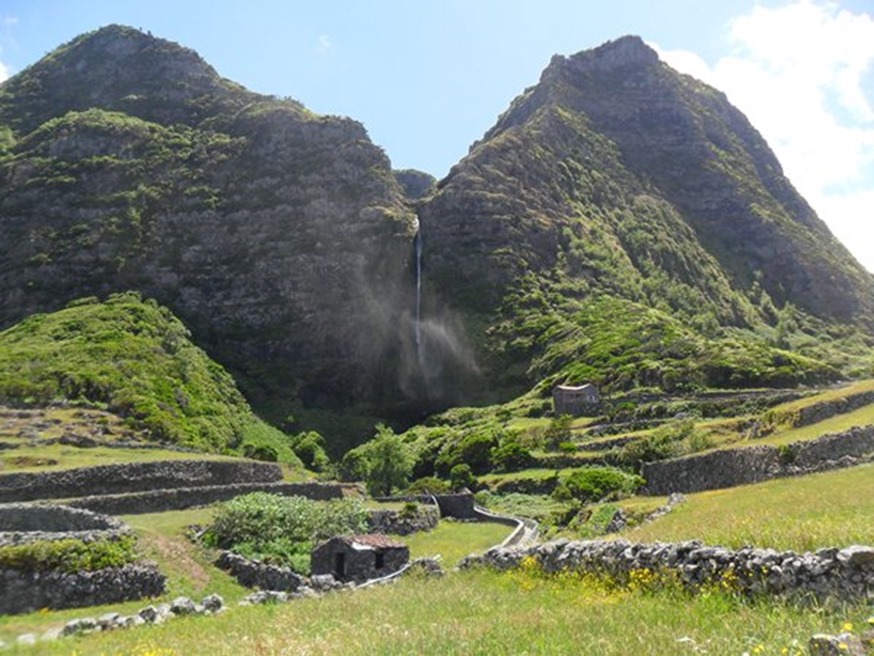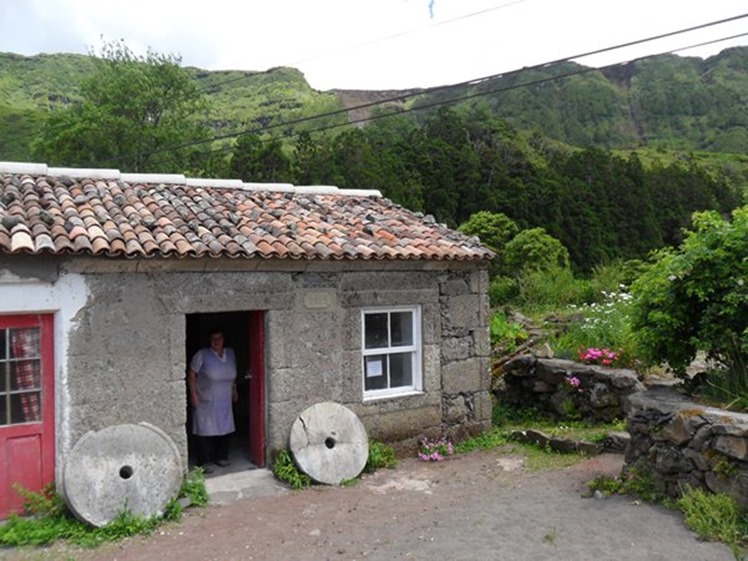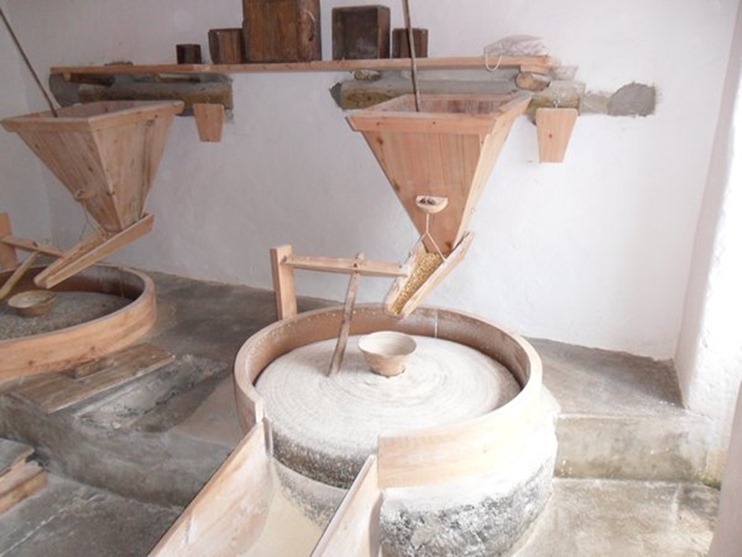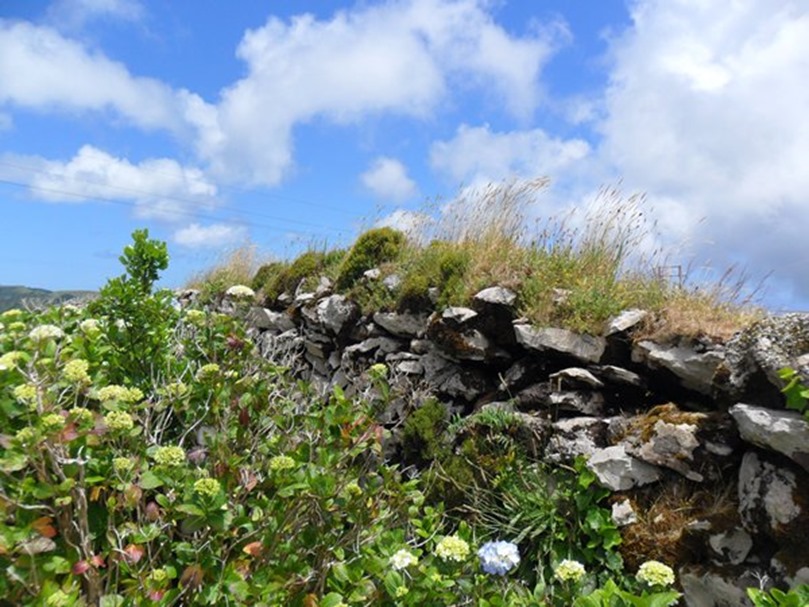Beautiful Flores - Our Azorean Landfall N39 23 W31 09

|
A landfall after 19 days at sea is always a thrill but as Flores unfolded itself we knew we had arrived somewhere really special. The island is the most westerly of the Azores and has a warm damp climate and volcanic soils ideal for plant growth.
The villages cluster at the foot of the steep hillsides and are as clean and tidy as they look with their whitewashed walls and red tiled roofs. The people are friendly and helpful, many of them speaking excellent English.
A highlight was the village of Cuada. It has no roads and was abandoned in the 1960s as its inhabitants moved away to the towns or emigrated. Today it is still completely intact, the beautiful stone buildings have been preserved as a self catering hotel. It is idyllic with the cottages renovated to a high standard and the gardens a riot of flowers. Advertised as a paradise within a paradise for once the advertising is accurate. If you want a holiday away from it all in a setting of stunning beauty this is for you.
The island has few tourists as yet and the roads are deserted. The walking in the hills is demanding but with beautiful views at every turn. The volcanic history of the island is evident in the many crater lakes of the old calderas that are dotted around the interior. Note the difference in the colour of these two adjacent lakes.
The coast is rugged with no natural harbours but the island was once important for whaling and the old slips can still be seen where the carcasses were brought ashore and processed.
What look like stone walls skirting the fields in the picture below are in fact hedgerows of blue and purple hydrangeas often thick with pink roses and there are lillies everywhere. The air has wafts of sweet perfumes like the marshmallow scents of the wild figs, bay leaves and many flowers. The plants are not uncommon like bottle brush trees, busy lizzy, agapanthus, tumbling tom, hollyhocks, nasturtiums, but there are so many of varieties and in such profusion that it turns the head. All this makes Flores a wonderful place for land birds as well as being a breeding ground for terns and shearwaters. There is always bird song, or in the case of shearwaters bird racket – they sound like old crotchets having a squabble.
The hydrangeas are just coming into blossom but when in full bloom there will be further burst of colour across the island.
The road verges are lined with flowers.
There are also spectacular waterfalls including this one on the west of the island where the water is blown away long before it reaches the bottom.
Rain is not unusual of course, although it didn't rain when we were there. The abundance of water means plenty of rivers and watercourses which power small watermills in most of the villages making them self sufficient which they certainly needed to be in the past. Some of the larger villages have several watermills to grind corn, a crop that is abundant here. Not all the mills are at work these days but some are still grinding and producing good corn meal like this one which has been at work since 1863.
The Azoreans have a reputation for being a strong, tough people. They would have needed to be living and working in this terrain in the past with little infrastructure apart from that which they built with their own hands. They have worked with the landscape and nothing seems out of place except for modern day telegraph poles, cables and such like.
A very beautiful place .
|
